The whale shark guardians of the Philippines and the case of the missing big fish
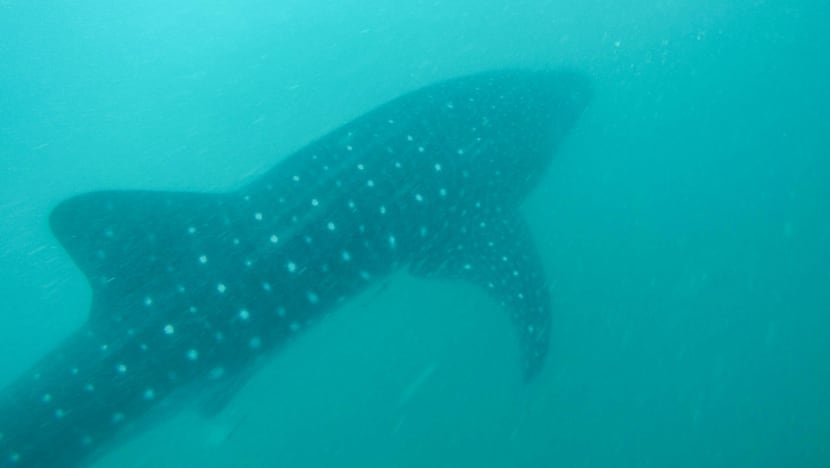
Whale sharks regularly visit the food-rich waters around Donsol. (Photo: WWF Philippines)
DONSOL, Philippines: For such enormous creatures, whale sharks tend not to reveal much of themselves. They know how to hide.
It is one the reasons an encounter with the world’s biggest fish is so highly prized.
Waters around Donsol in southern Luzon in the Philippines are where many whale sharks reveal themselves, underwater foragers drawn from the depths towards where fishermen eye smaller catches.
This is a bountiful hunting ground for the sharks, a nutrient-rich passage where rivers meet the sea and favourable currents encourage the growth of plankton.
Local fishermen say their ancestors always knew about the presence of the whale sharks. But they never understood much about them.
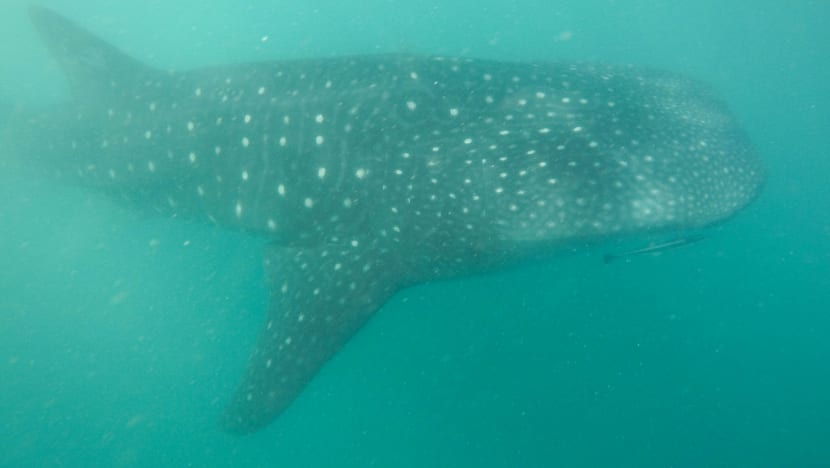
These underwater giants were not being caught, nor were they the subjects of folklore. They were nuisances, though, feasting on the riches of plankton in the area but often at the expense of fishermen’s netting.
Alan Amanse remembers fear coming over him too as a young boy, spotting the drifting shadow below his boat.
“The first time I saw a whale shark was when I was seven years old. A friend invited me to catch fish that day. When we saw it, we screamed,” he said.
“I had no idea what a whale shark was.”
He knows about them now. Amanse is the president of the group charged with the guardianship of the creatures, known as buntanding in the Philippines. The Buntanding Interaction Officers Association is a motley collection of local men who have helped carve out a tourism business on the backs of their visiting marine friends.
Dozens of tourists each day descend on the previously unknown village for boat trips in the hope of spotting and swimming with the sharks - up to 18-metres long in Donsol - in their natural habitat.
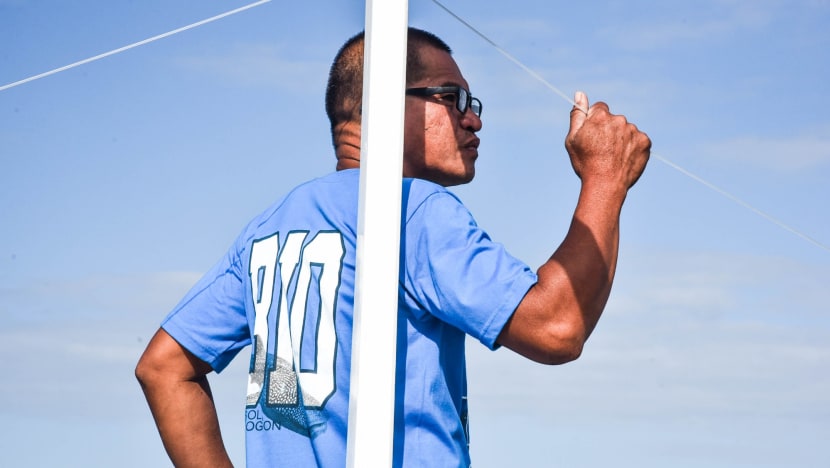
With conservation at its core, not profit, the program is lauded throughout the country as a successful marriage between humans and nature.
“I saw them take pride in it and that worked wonders for conservation of the whale sharks. It’s one of the most successful awareness campaigns ever in conservation in the Philippines,” said AA Yaptinchay, the director of Marine Wildlife Watch of the Philippines.
The sea around Donsol is murky and with poor visibility of between three and five metres - a dilemma only for snorkellers, not the marine life. It means a glimpse of a whale shark is instant, fleeting and precious.
Locals have been forced to garner new skills in the increasingly challenging effort to showcase the wildlife that people now travel from across the world to witness.
Randy Radana is a whale shark spotter. He stands on the canopy of the boat for three hours each outing, scanning the distant waters for any sign of whale shark activity. It is a precise and unique task; a fraught search for a dorsal fin, a shadow or a disturbance in the water.
It has also changed his life.
“We love and care for the whale sharks because we get our income from them. We get our funds for our children’s schooling and our everyday budget from whale shark tourism,” he said. “We didn’t know that these large creatures would become a big blessing for us.”
Tourism is a boon for Donsol now, but it was not always a guaranteed endeavour. Some 20 years ago it was not even on the radar.

FROM HUNTED TO HONOURED
In the mid to late 1990s, the hunting of whale sharks was hitting its peak in the Philippines. While sharks were traditionally caught in some communities, cultural activities, particularly around Bohol, began to turn commercial, sparking concern among environmentalists.
AA Yaptinchay, formerly of the World Wildlife Fund (WWF), was on the ground in communities at that time. He watched the hunts increase as foreign buyers became involved.
“Initially it was a traditional fishery to serve the local markets but somehow it became this exportable thing. They were shipping out fresh meat to Taiwan. It was developing into a big business,” he said.
It was around the same time that an abundance of whale sharks began to be noticed around Donsol. Sensing an ecological opportunity, quick action was launched to try and create new protection for the whale sharks in the area.

“We were worried that the buyers of whale sharks in Bohol would relocate there.” Yaptinchay said. The spotting of the sharks grew to national prominence almost instantly, and it prompted then president Fidel Ramos, a keen diver, to proclaim them a protected species.
It was a milestone moment, beyond the hopes of what WWF was calling for. And according to Amanse, the ruling came just in time.
“There were outsiders from Balatan who were able to hunt four whale sharks. The problem was the hunters were able to run free because there was no law penalising such acts during the time they were caught,” he said.
“The law was only enacted three days after the hunters were caught.”
What followed was an unprecedented and unexpected tourism surge in the local area. “Donsol boomed. When we first went there, they had never seen anyone in a bathing suit,” Yaptinchay said.
“No one knew about the whale sharks. Even us, in science field, they were meant to be rare animals. We were shocked that Donsol had been there forever, and locals had been seeing whale sharks forever.”

WHERE ART THOU, WHALE SHARK?
While poachers’ ambitions of capturing whale sharks in Philippine waters have been eviscerated, there is still something going wrong.
The number of whale shark sightings in Donsol is on a dramatic slide. During the 2018 season, the number of individual fish encountered fell to just 46. In comparison, that number was 211 in 2009.
The total number of encounters last year, including repeat sightings of the same shark, was just one-third of the number in 2017.
“The trend is going downwards,” said Andrea Pimentel, an assistant researcher on whale sharks for WWF in Donsol.
At the same time, sharks are being drawn in sizeable numbers to a tourism-focused operation in Oslob in Cebu province. They are lured close to shore to an “interaction zone” using food, an experience compared to a “theme park” by AA Yaptinchay.
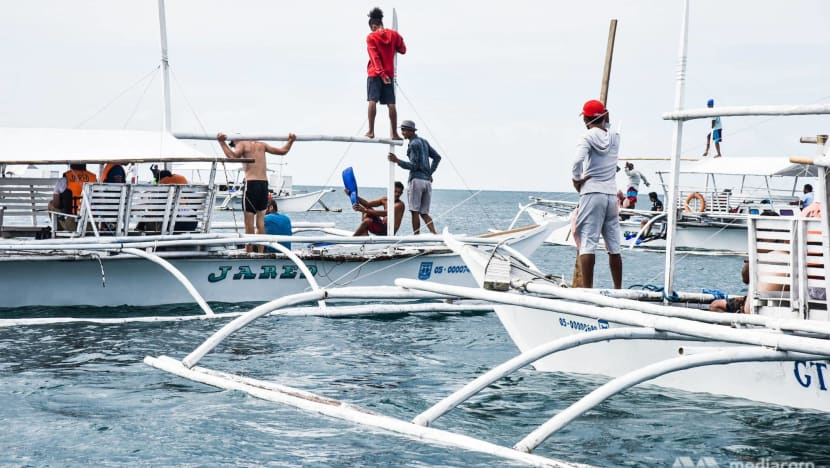
On any given day, Oslob can expect more than a dozen sharks to appear for feeding. Their season runs 364 days a year. In Donsol, spotting just one or two wild sharks looking for natural sources of food each day, during a migration period lasting about two months, is the new normal.
“These are migratory animals so they’re used to roaming around but in the other place (Oslob) they stay there because there’s food for them. The nature of being migratory is gone for some whale sharks,” said Manul Narvadez, WWF Donsol’s project manager.
But, for now, no research has proven the Oslob operation has directly affected the sharks appearing in Donsol.
The economics for the respective communities are on vastly different scales. Donsol receives just a small fraction of tourists in comparison with Oslob’s half a million visitors last year.
While operators in Donsol refuse to turn to feeding whale sharks themselves, it is evident that the shrinking sightings has seen them start bending their own regulations. There are fewer visitors. But they have high expectations.
Out on the water, the pursuit of the sharks has become desperate. “No-one is following the rules,” says Alan Amanse.
There is a growing pressure on the buntanding officers to ensure sightings. It means up to 30 boats, the maximum allowed each day, can each follow and circle the same animal once it is located.
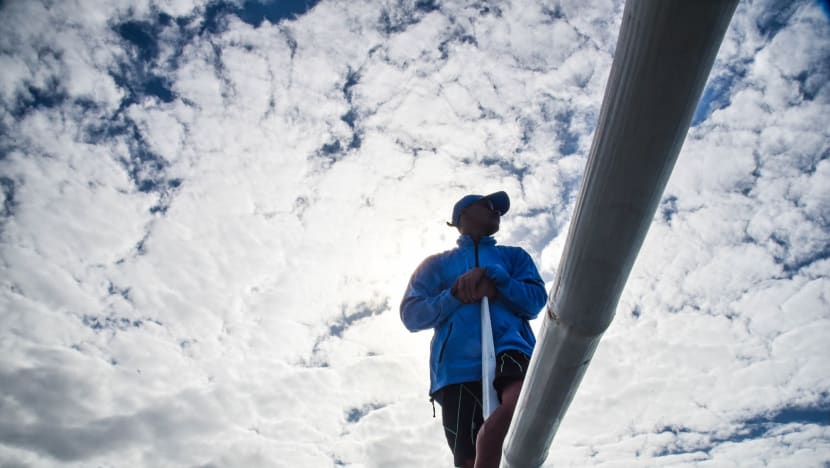
“In the interaction, there is a policy of one boat, one shark but it is seldom followed. The interaction operated more smoothly when there were still few tourists and there were many whale sharks,” he said.
“Most of the guests are nice, but there are those who are hardheaded. They say a lot of mean things when they fail to see a whale shark.” The guaranteed experience in Oslob and pursuits of whale shark selfies have contributed to the pressure, he believes.
There are environmental issues at play too. And not all of that can be controlled by Donsol’s whale shark stakeholders. Climate change is looming as the number one threat to the whale shark population in the Philippines.
They are one rather large component of a delicate ecosystem.
“Temperature of the sea plays an important role in the presence of whale sharks. If the temperature will rise probably there will be a change in the composition of our plankton,” Pimentel said.
The WWF, which is a founding partner and supporter of the conservation-tourism project concedes that some of the rules needs to change to better ensure its sustainability. What worked 15 years ago when whale sharks could be spotted with ease needs adjusting during these leaner days.
“It’s about balancing our economy and also the conservation of our resources. It is the challenging part. But we need to address a sustainable means of tourism so the whale shark will be preserved for the future,” she said.
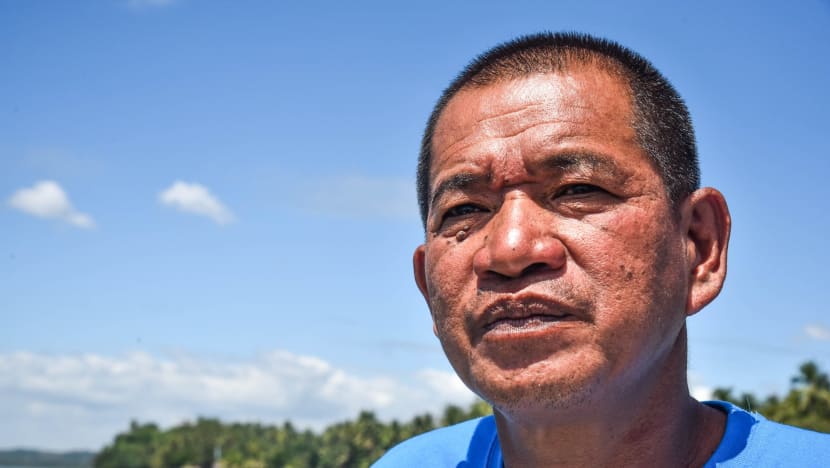
Donsoleños understand the precariousness of the environmental situation. The local government is still reliant on its big ticket but is eager to expand its offerings to visitors.
The off-season is long in Donsol and the tourism dollar is hard fought but enticing.
There is a communal hope that the current downturn is temporary and the sea will turn bountiful like it always was, in the days when whale sharks would bump their noses against small boats before diving away into the mysterious blue.
“We take pride in our role as protectors of the sea, tourists, and whale sharks,” said Amanse, his boatmate Randy Randana in agreement.
“I hope that someday the whale sharks will return like before.”
This is the second in a two-part series looking at the plight of whale sharks in the Philippines. The first part can be read here.














